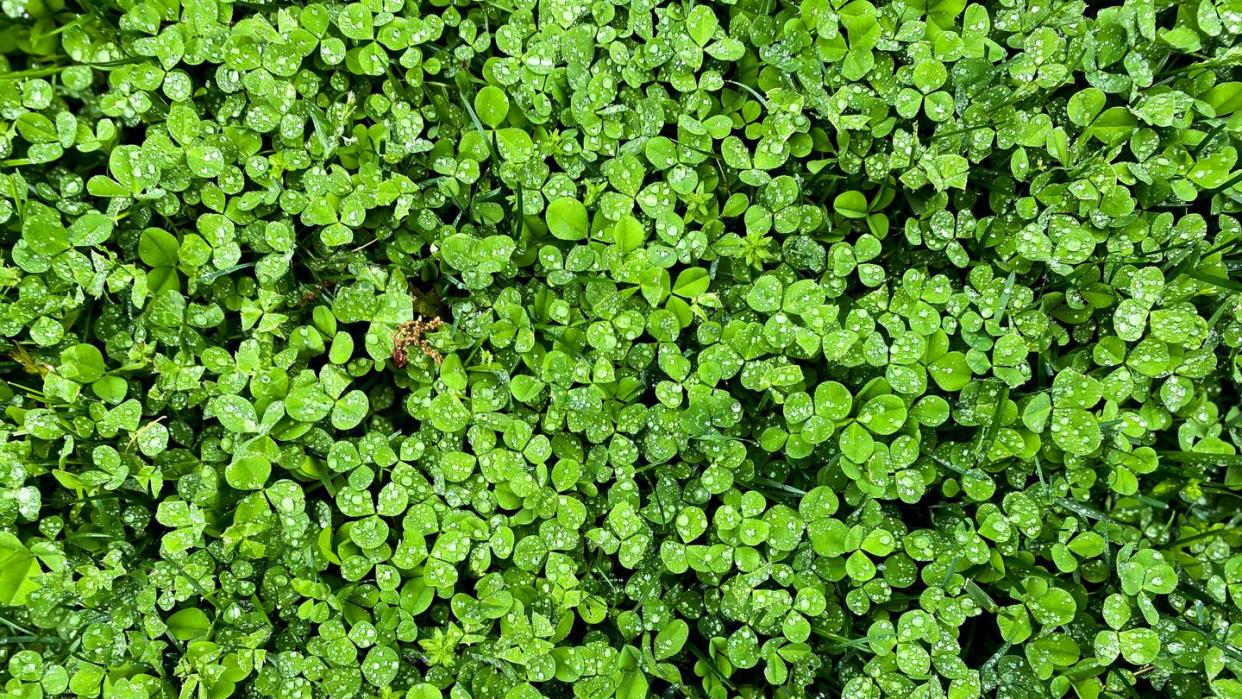Here's How to Plant a Clover Lawn That's Low Maintenance and Eco-Friendly

Dreaming of a lush, green lawn without the hassle of constant maintenance? Look no further than clover lawns. These eco-friendly alternatives to traditional grass lawns are gaining popularity for their resilience, low maintenance requirements, and environmental benefits. In this guide, you'll learn everything you need to know about how to plant a clover lawn, from understanding what clover lawns are to expert tips on successful establishment and maintenance.
What are clover lawns?
Clover lawns are eco-friendly alternatives to traditional grass lawns that consist primarily of clover species such as white clover (Trifolium repens) or Dutch clover (Trifolium repens). These low-growing, nitrogen-fixing plants form a dense, lush carpet of foliage punctuated by clusters of small, white flowers. Clover lawns offer numerous advantages over traditional grass lawns, making them an excellent option for eco-conscious homeowners.
What are the pros and cons of growing clover lawns?
Sally McCabe, the associate director of community education for the Pennsylvania Horticultural Society, says there are plenty of perks that come with establishing a clover lawn.
"Clover requires less mowing, watering, and fertilizing due to its natural nitrogen-fixing abilities," she says. "Clover is also eco-friendly in that it reduces reliance on chemical fertilizers and herbicides, benefiting the environment. It increases the permeability of soil, so it can absorb rain better. Clover lawns are also more drought tolerant than some grasses, and they attract pollinators, offering benefit to bees, butterflies, and other local biodiversity."
A clover lawn also helps suppress weed growth (which means less time spent pulling those pesky weeds!), although McCabe notes that keeping weeds under control can be challenging in the first few years. "And you can’t use weed killer, since it will kill the clover," she notes.
Some other cons include:
Foot traffic sensitivity: Clover lawns may not withstand heavy foot traffic as well as traditional grass lawns, making them less suitable for high-traffic areas.
Appearance preferences: Some homeowners may prefer the uniform, manicured look of a traditional grass lawn over the more naturalistic appearance of a clover lawn. "Clover looks different than your picture-perfect velvety lawn," McCabe says. "But for that you need feeding, nurturing, watering and constant mowing, or astro-turf."
Bee concerns: "Clover lawns also attract bees, which is a positive for some but a concern for others," McCabe says. To divert bee traffic, she recommends planting bee-friendly flowers in a separate area.
How to plant a clover lawn:
Prepare the site: McCabe recommends planting clover seeds in early fall or spring in well-drained soil. Begin by preparing the site for planting. Remove any existing vegetation, weeds, and debris from the area to create a clean, weed-free surface.
Test the soil: Conduct a soil test to assess the pH and nutrient levels of your soil. Clover prefers slightly acidic to neutral soil with good drainage. Amend the soil as needed by adding lime to raise pH or organic matter to improve soil structure.
Select your seeds: Choose a high-quality clover seed blend suitable for your climate and soil conditions. "White clover (Trifolium repens) is a popular choice for lawns, McCabe says. "But there are other options like mini clover (a dwarf variety of Trifolium repens that is shorter and fills in faster but doesn’t tolerate full sun or full shade) or crimson clover (Trifolium incarnatum) that offers seasonal color but is taller, so it looks better in a meadow setting."
Spread the seeds: Spread the clover seeds evenly over the prepared soil surface using a broadcast spreader or by hand. Rake the seeds lightly into the soil to ensure good seed-to-soil contact.
Water the seeds: Water the seeded area lightly to moisten the soil. Keep the soil consistently moist but not waterlogged during the germination period, which typically takes 7-14 days. Once the clover seedlings have established, gradually reduce watering frequency.
Mow the lawn: Mow the clover lawn regularly to maintain a height of 2-3 inches, allowing the clover to flower and attract pollinators.
How to care for a clover lawn:
Mowing and watering: Clover lawns require less frequent mowing than traditional grass lawns. "You should mow it only two to three times a year to keep it from flowering and spreading aggressively," McCabe says. "Watering is rarely needed in areas with regular rainfall, but occasional watering during dry spells helps maintain a lush look."
Fertilization: Clover lawns typically require minimal fertilization due to the nitrogen-fixing capabilities of clover plants. Avoid using synthetic fertilizers high in nitrogen, as they can promote excessive leaf growth and suppress clover flowering.
Weed control: Clover lawns naturally suppress weed growth due to their dense growth habit. However, occasional hand-weeding may be necessary to remove any persistent weeds that emerge.
Pest and disease management: Clover lawns are relatively resistant to pests and diseases. Monitor the lawn regularly for signs of pest infestations or disease symptoms, and address any issues promptly.
Over-seeding: Over-seed the clover lawn annually in the fall or early spring to maintain optimal coverage and density. Choose a clover seed blend specifically formulated for over-seeding to fill in any bare patches and promote even growth.
By understanding the basics of clover lawn establishment and maintenance, homeowners can enjoy a lush, green lawn that's both naturally beautiful and environmentally friendly.
You Might Also Like

